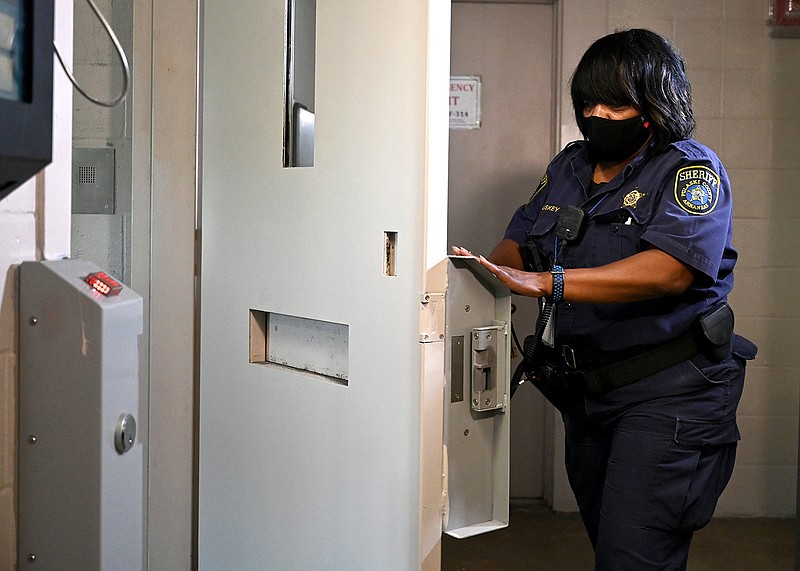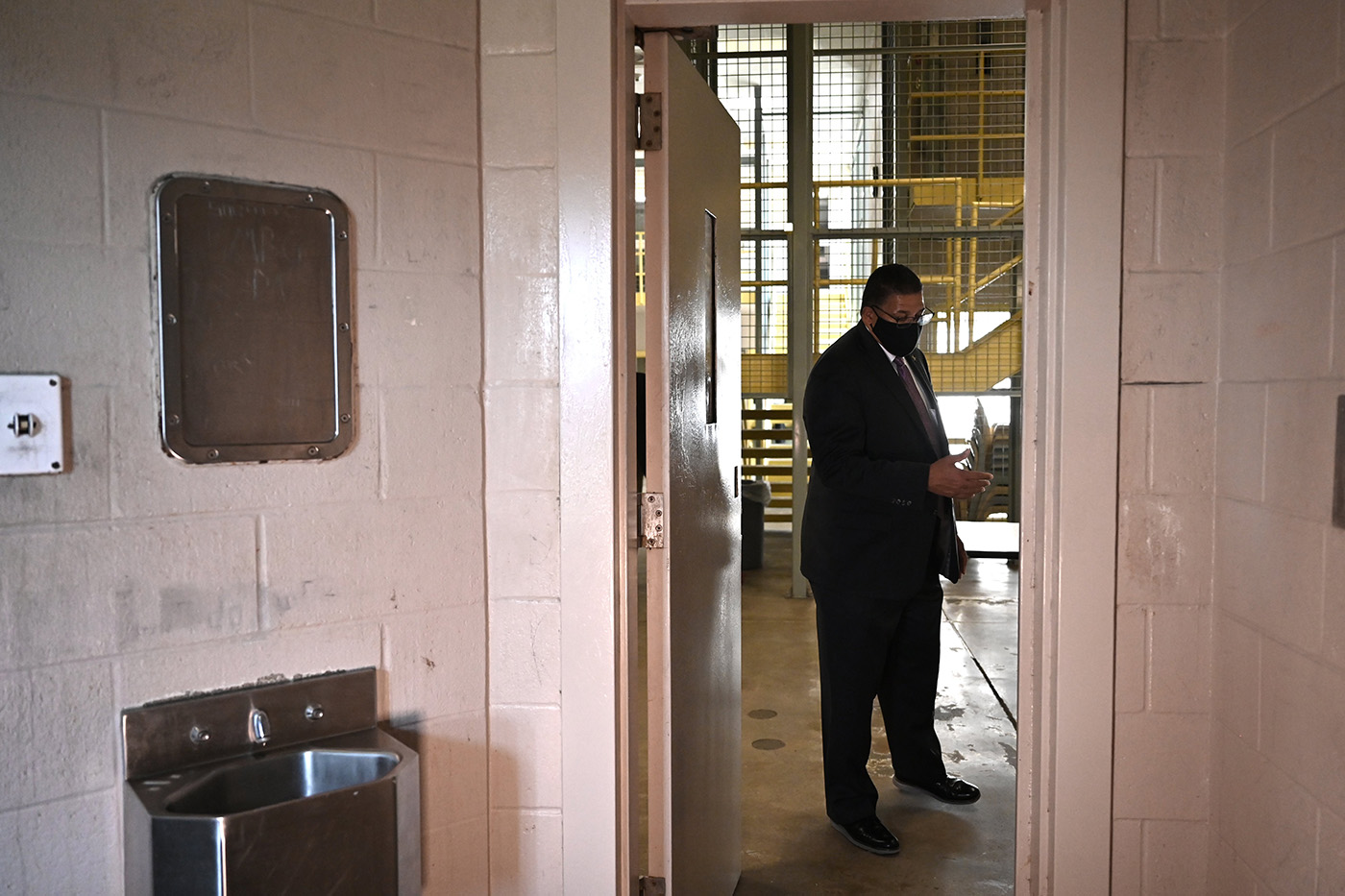The Pulaski County sheriff on Thursday showed off new locks fitted on cells at the county jail, marking the completion of a project that he said was long overdue but vital to the safety of inmates and jail staff.
The installation of about 530 locks across the jail's 15 cell blocks began last June and cost nearly $2 million, Sheriff Eric Higgins said Thursday.
The new locks are mounted on the outside of secure doors to cell blocks and individual cells, and do not give a person on the other side access to the locking mechanism.
The older locks gave no obvious indication if they were locked or unlocked, and the exposed mechanism meant inmates came up with ways to bypass them, such as placing objects in front of the locking bars, keeping the door from fully closing, sheriff's spokesman Lt. Cody Burk said.
Now, Burk said, a colored light on the outside of the mechanism shows at a glance if the door is left ajar or not properly locked -- green means closed, red means open.
Higgins acknowledged that the upgrade came "probably about 10 years late," but said the project had been high on his priority list since he took office in 2019.
The previous locks, which were similar to standard keyed door locks and had been in place since the jail was built in 1994, could be manipulated and opened from the inmate's side, Higgins said.
"The deputy needs to know that once a person is placed in a cell that they cannot come out, and we were having issues throughout the facility where people were able to compromise the lock and come out," Higgins said.
Inmates were never able to escape the cell block they were housed in, but some got free of their individual cells, Higgins said. He showed reporters padlocks placed near the bottom of each cell door that had to be used to secure them when the old locks were compromised and could not be trusted.
The sheriff worked with the Quorum Court to secure money for the project, stressing that the old locks could not be replaced with the same models because those locks were no longer produced. One company tried to repair the locks, but it was always a stop-gap solution, Higgins said.
"Our options were to continue with what we had or pursue new locks," Higgins said.
Once the money had been approved, the installation took time because entire cell blocks had to be emptied and inmates moved to other units while the contractors worked, Higgins said.
That was no easy task in a jail that typically operates near capacity, the sheriff said. The facility has 1,210 beds, and had about 1,169 inmates Thursday, Higgins said.
"We're pretty full," Higgins said.
They also had to be mindful of isolating covid-19 cases and keeping inmates and staff safe from the virus.
Once the blocks were emptied, workers cut out the old locks, welded on the new locking mechanism and made any repairs or tweaks necessary, Higgins said. The process took three weeks to a month per cell block if they didn't encounter issues. Some problems arose from the building, which was built on a landfill, shifting and settling on its foundations, but workers were able to account for it.
"It took a lot of work to get it done," Higgins said.
Maintaining the facility has always been a problem, Higgins said, and the locks were a problem before he ever took office.
When the jail was built, tax money was allocated for the construction, but little to none was provided for proper upkeep, Higgins said.
"You have to have the resources to maintain the facility," Higgins said.
In an interview last month, the sheriff said there is rarely enough money to fix all of the things that need repaired, especially expensive kitchen equipment that is in use every single day for years on end.
With the new locks in place, Higgins' next big project is replacing the electric control panels used by jail staff to do things like remotely lock and unlock doors. He expects the project to start in July, and anticipates it taking another year to complete.
Like the locks, the control panels have not been replaced or significantly upgraded since the facility was built in 1994, Higgins said.
"These are systems that can't be repaired, you can't get parts for them, so they have to be replaced," Higgins said, tapping a worn control panel at a guard station in the cell block.
Higgins did not give an estimate on the cost of replacing the panels and electronics.


